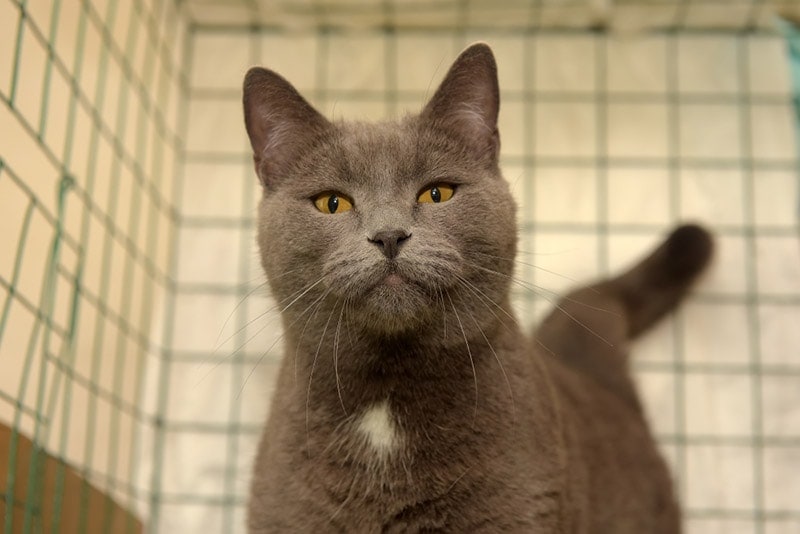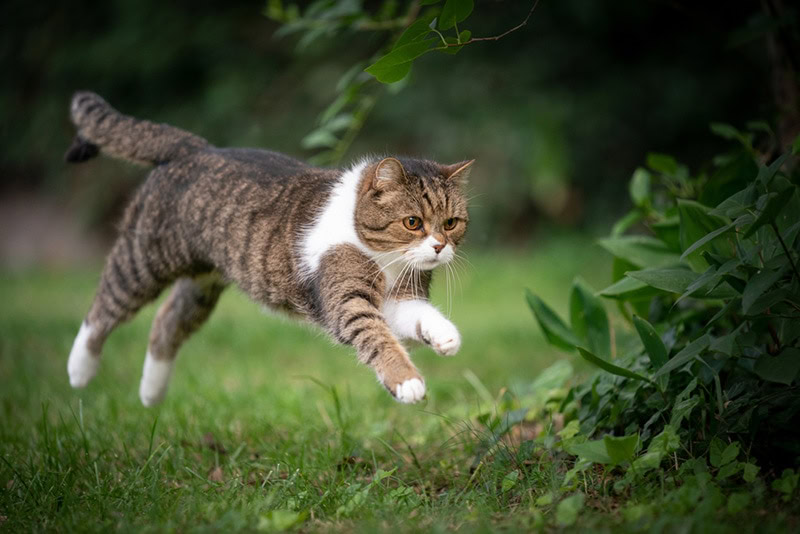VET APPROVED

The information is current and up-to-date in accordance with the latest veterinarian research.
Learn more »Click to Skip Ahead
When new dog owners bring their pet home, it’s drilled into them how important training and socialization are for their new puppy. Unfortunately, the same isn’t always said of cats. Many cat owners don’t even realize they can train their cats because—let’s face it—cats march to the beat of their own drum and aren’t always receptive to doing what their owners want them to do.
The truth is that with the right training approach, time, and patience, cats can learn to do pretty much anything a dog can. Read on to find our tips for training your cat and to learn how to deal with problem behaviors.

How to Train Your Cat
1. Pick the Right Treats
High-valued treats will be the key to your cat training success. The tastier the treat, the better. Do not pick treats your cat regularly gets because they won’t have as much value. Your kitty won’t be excited to learn new tricks unless it thinks the rewards it gets in return are worthwhile.
Freeze-dried treats are a great option as they are healthy and easy to break into pieces to offer smaller portions. Fresh diced or shredded chicken or bits of anchovies are fantastic rewards, too.
2. Choose the Right Time
As a cat owner, you know your pet cat isn’t always in the mood to play or snuggle. It’s not likely to always be ready and willing to train, either. It has a strict daily regimen of eating, playing, grooming, and napping, so you must fit your training sessions into their routine.
Some of the best times to try training include an hour before regular mealtimes or right after your cat has woken up from a nap. This is when your kitty will have the most energy and focus, plus they’ll likely be hungry, so your training rewards will be even more enticing.
Once you know what time of day works best for your training, commit to short daily sessions around the same time. Consistency is key for training your kitty.
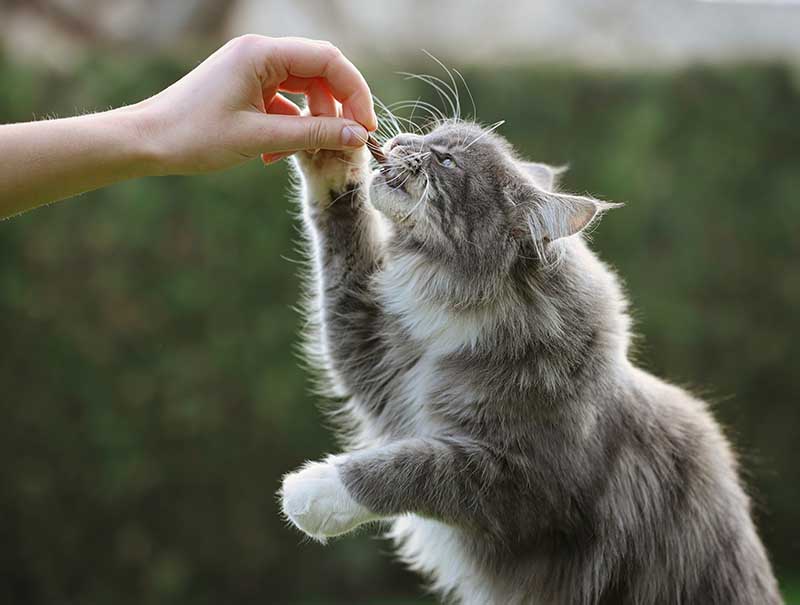
3. Keep Sessions Brief
Forcing your cat to sit through long training sessions is a sure-fire way to make it despise training. Cats have short attention spans, so keep your sessions brief. When you first start training, even five-minute sessions can feel long and grueling for your kitty. It is better to stick to short and positive two-minute sessions than to push it. End training early if your kitty isn’t showing interest. Try to end your sessions positively well before your kitty has had time to lose interest.
4. Get the Right Equipment
Clicker training is a highly effective way to train all sorts of animals. A clicker is a small plastic box that fits in the palm of your hand. It has a metal tongue that, when depressed, makes a clicking sound. So, when you use a clicker for training, you’re essentially using a sound to communicate to your cat that it’s doing something you approve of.
When you train with a clicker, you must first teach your kitty to associate the sound of the click with a reward. Once it understands that it gets a treat whenever it hears a click, it will learn that certain behaviors will earn it a tasty reward.
A target stick is another great training tool. These long, lightweight sticks have a small ball on the end and help move your cat through space without physically manipulating your cat. It’s a clear visual target to move your kitty from point A to point B.
If you choose not to use a clicker or target stick, you can achieve the same results using your hand and voice cues.
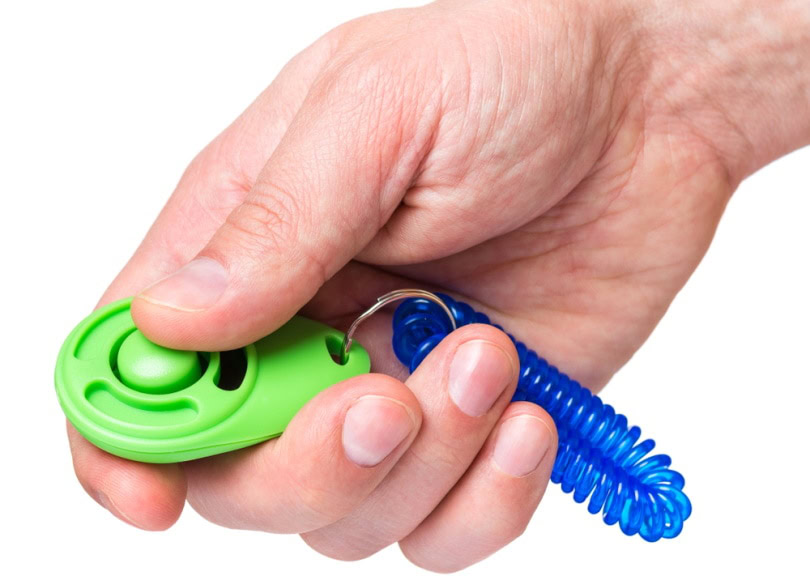
5. Start With the Basics
We get it; you’re excited to start training your pet to do tricks, but you need to start with the basics before jumping into more complicated things. For example, you can’t expect your kitty to jump through an elevated hula hoop on day one. Instead, start slow by teaching your kitty that the clicker sound means getting a treat. Once it realizes that the click means a reward, you can branch out to basic commands like “sit” or “lay.”
6. Reward Immediately
Your clicker tool takes a snapshot of the desired behavior and tells your kitty which action it performed that earned it the reinforcement or reward. When you are clicker training, you need to click the exact moment your kitty performs the correct behavior and then immediately offer it a treat. Your pet will learn fast that the clicking sound is a promised reward, so don’t lag with providing the treat. Reinforced behavior will be repeated, so once your kitty knows the behavior you’re asking for earns it a treat, it’ll be more likely to do it in the future.

7. Consistency
Consistency and repetition will help reinforce the behaviors you want your cat to exhibit. However, you also must get everyone in the house on board with your training regimen, as we can easily send mixed messages to our cats without even realizing it.
For example, let’s say you want to train your cat to stop jumping on the counter by redirecting it to its favorite perch whenever you catch it on your counters. Except for one day, when redirecting your cat to its perch, you give it a big smooch on its head, sending your cat the message that jumping on the counter means getting positive attention. Then, later that day, your spouse finds it on the counter and then yells at it to shoo it away, sending it an entirely different message than the one you had given earlier. This causes confusion and makes training even more challenging.
8. Never Punish
Punishment is not effective when training any animal. Your cat will not learn from you if you harshly discipline it. Punishing your cat can cause it stress, leading to behavioral issues and health problems. Discipline, especially physical domination, will break the bond you have formed with your cat and make training almost impossible.
9. Have Realistic Expectations
Going into your first training session thinking that your kitty will learn how to shake a paw, roll over, and speak on command on day one is unrealistic. When your cat doesn’t meet these goals on the timeline you’ve created, you’re likely to feel frustrated and let down. Remember that learning new behaviors or solving problem behaviors takes time and patience. While we’re all for setting goals with your training sessions, make them small and reasonable.
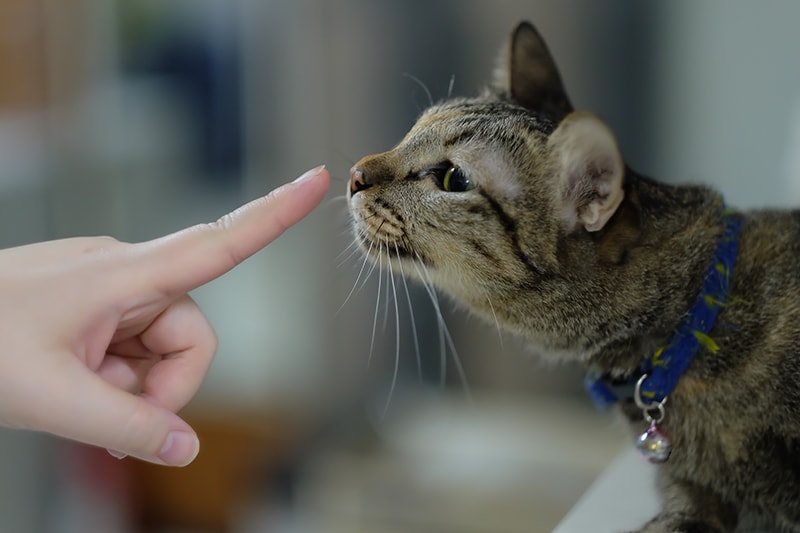

What Tricks Can I Teach My Cat?
Cats can learn many of the tricks that a dog can.
- Spinning
- Jumping onto objects
- Jumping through hoops
- High five
- Fetch
- Shake a paw
- Give kisses


Training to Address Problem Behaviors
Training isn’t limited only to commands and tricks. You can use your training sessions to address problem behaviors.
Inappropriate Litter Box Behaviors
Most kittens will come from the shelter or breeder already litter trained, but this isn’t always the case. Some cats develop inappropriate litter box behaviors that can be challenging to break.
Litter boxes must always be clean and kept in a quiet place. About 15 minutes after your cat has finished eating, move them into their litter box. Pick up their front paw gently and use it to scratch the sand. Once it eliminates, praise and offer a reward immediately. Repeat this for several days, and your cat will eventually realize what the purpose of its litter box is.
If your trained cat is suddenly urinating outside of its litter box, it could be a sign of a health issue. Make an appointment with your vet to rule out potentially serious conditions like urinary tract infections, crystals, or other issues.
Jumping on Counters
Cats love to be up high, so it shouldn’t be surprising if your cat perches on your kitchen cupboards or countertops. Training your cat to stay off your counters starts with you. Keep the area clean at all times. Wipe up any spills and put leftover food away immediately. If your kitty is still curious about your counters, provide alternatives. A tall cat tree will give them a high perching spot without leaving litter crumbs and cat hair all over your kitchen work surfaces. When your cat jumps on your counters, remove them and place them onto their cat tree instead. When they go to that spot, give them a treat to reinforce that behavior.
Biting
Cats bite for many reasons, including stress or dominance. If your cat’s biting is becoming problematic, ensure you have a diverse selection of interactive cat toys to play with. Don’t use your hand as a toy because this encourages biting behaviors. If it bites you during a play session, disengage and ignore it. When your cat is playing nicely without roughhousing, reward its calmer behavior.
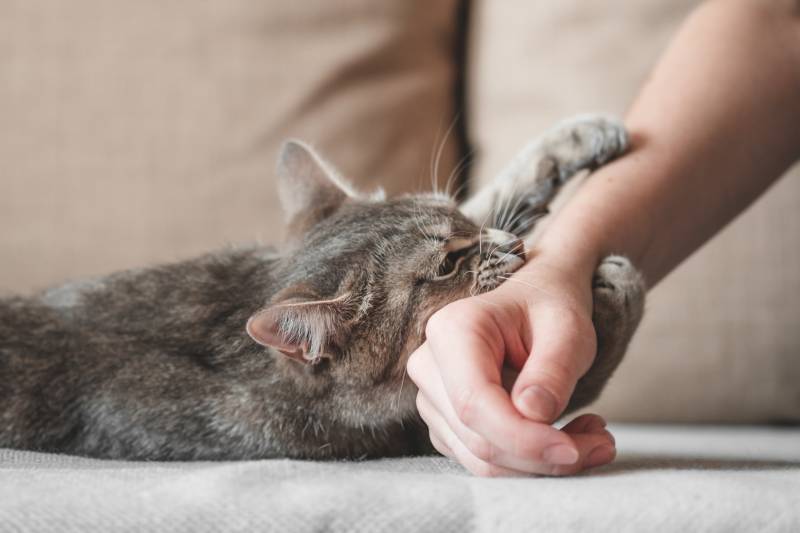
Scratching Furniture
Providing scratching posts is the easiest and most effective way to discourage furniture scratching. Cats need to scratch, so having a designated spot to do so should help redirect this behavior.
The strategic placement of the scratching post is important. For example, you may wish to place it in front of your cat’s favorite spot on the furniture to scratch or in an area near its favorite sleeping spot, as cats often stretch and scratch when they first wake up.
If you see your kitty stretching onto your furniture as if it is about to scratch, redirect it to the scratching post.
The Hepper Hi-Lo Cat Scratcher features a modern and clever design that offers cats an appealing place to scratch – and a way to keep them from scratching all the things they shouldn't. Unlike most cat toys (where your cat probably just prefers the cardboard box they came in), cat's flock to this design ... maybe it's because there's cardboard in it!
- Premium Materials - Hepper's cardboard scratcher is made with dense, B-flute cardboard, and a metal...
- High, Low and Lower - A single cat scratch pad won't keep your cat engaged. 3 unique positions keeps...
- Activates Muscles - The Hi Lo isn't just a cat nail file to stop the chief cat couch scratcher. The...
With its 3-position setup, textured cardboard, and sturdy frame, it encourages their natural scratching behavior, steering them away from clawing at items like furniture, walls, carpets, curtains, and people. The Hi-Lo is a reliable solution to safeguard your home and create a more enjoyable environment for your cat, all while looking modern and stylish.
At PangoVet, we've admired Hepper for many years, and decided to take a controlling ownership interest so that we could benefit from the outstanding designs of this cool cat company!
Eating Houseplants
If your cat is eating your houseplants, it could do more than just damage or kill your plants. Many household plants are toxic for cats, so chewing on them could cause severe illness or even death. This is why training your cat to steer clear of your plants is essential.
Redirection and distraction are key in preventing your plants from falling prey to your cats. If you catch your kitty investigating your plant, call it away or pick it up and remove it from the area. Wait a moment and then redirect it to a more appropriate outlet for its energy, such as a scratching post or toy.
If this doesn’t work, try making your plants inaccessible. For example, position them on a high shelf or hang them from the roof. You can also try making your plants unappealing by spraying diluted citrus juice onto your plant’s leaves.


Final Thoughts
While training a cat may take some time and a lot of patience, it’s more than worth the effort. Training is a positive bonding experience for both cats and humans, so get out your pet’s favorite high-value treat and your trusty clicker and get to work.
Featured Image Credit: DimaBerlin, Shutterstock








